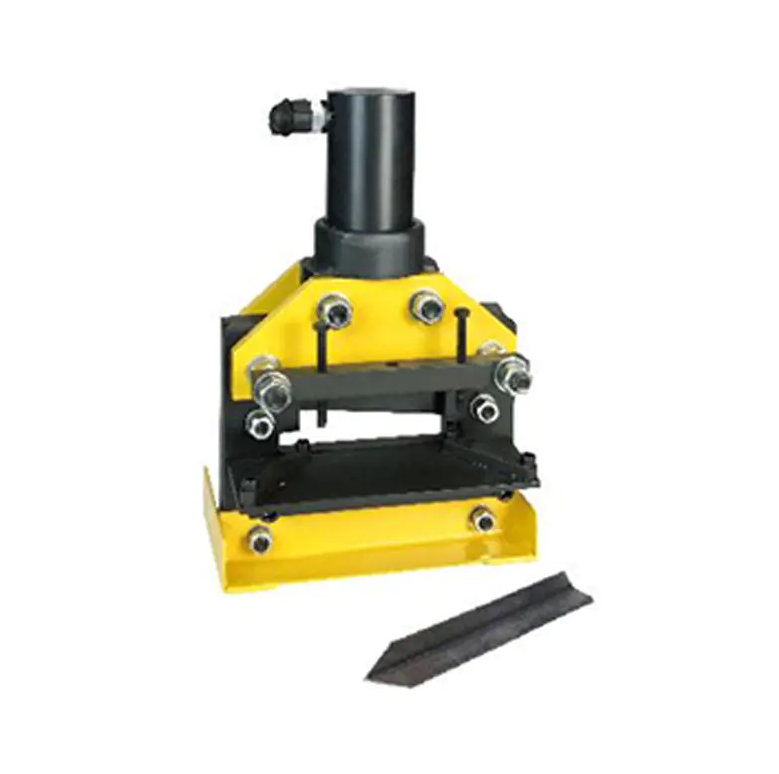Benefits of Hydraulic Angle Steel Cutters Over Traditional Angle Steel Cutting Approaches

The Hydraulic Angle Steel Cutter offers numerous advantages compared to traditional steel cutting methods, making it a preferred choice in modern metal fabrication and construction industries. Traditional cutting techniques for angle steel, such as manual sawing, oxy-fuel cutting, or abrasive cutting, often present limitations in terms of precision, speed, safety, and overall efficiency. The Hydraulic Angle Steel Cutter overcomes many of these challenges by leveraging advanced hydraulic technology and specialized design, providing users with a more reliable, productive, and cost-effective solution.
One of the most notable advantages of the Hydraulic Angle Steel Cutter is its superior cutting precision. Traditional methods like manual sawing or oxy-fuel cutting may lead to uneven cuts or inaccuracies, especially when dealing with complex angle steel profiles. The hydraulic cutting system delivers consistent, controlled force to the blade, ensuring clean and accurate cuts every time. This precision reduces the need for additional finishing work and minimizes material waste, ultimately improving overall production quality.
Speed is another critical benefit where the Hydraulic Angle Steel Cutter excels. Traditional cutting approaches, especially manual or abrasive methods, tend to be slower and require more labor-intensive efforts. In contrast, the hydraulic system enables faster blade movement with high cutting force, drastically reducing the time needed to complete cuts. This increased speed boosts operational efficiency and throughput, allowing fabricators to meet tight deadlines and handle larger workloads.
Safety is a major concern in steel-cutting operations, and here the Hydraulic Angle Steel Cutter has clear advantages. Manual cutting and oxy-fuel methods involve open flames, sparks, or high-speed rotating blades, which pose significant risks to operators. The hydraulic cutting machine operates in a more controlled and enclosed manner, minimizing exposure to dangerous elements. Many hydraulic cutters also incorporate safety features such as automatic blade guards and emergency stop controls, reducing the likelihood of accidents and ensuring a safer working environment.
Energy efficiency is another aspect where the Hydraulic Angle Steel Cutter outperforms traditional methods. While oxy-fuel cutting consumes large amounts of fuel gases and abrasive cutting uses significant electrical power for grinding, the hydraulic cutter’s power consumption is optimized through its hydraulic drive system. With advanced hydraulic pumps and efficient motors, these cutters provide high cutting force with relatively low energy use. Additionally, the hydraulic system’s ability to control cutting pressure and speed reduces unnecessary power wastage, making it a more sustainable choice.
Maintenance and operational costs are also generally lower with the Hydraulic Angle Steel Cutter. Traditional cutting tools often require frequent replacement of consumables such as saw blades, grinding discs, or fuel supplies. In comparison, hydraulic cutters feature durable blades made of high-quality materials designed for longevity. The hydraulic components are robust and designed for extended service life with proper maintenance, which reduces downtime and repair costs.
Furthermore, the Hydraulic Angle Steel Cutter offers greater versatility and ease of use. Its adjustable cutting angles, variable hydraulic pressure settings, and adaptability to different steel thicknesses allow users to handle a wide range of cutting tasks with one machine. This flexibility reduces the need for multiple specialized tools and streamlines the fabrication process.
The corner angle cutting machine is dedicated to angle cutting, bending, and cutting of the multi-functional hydraulic angle iron processing machine, as long as the replacement tooling mold is on the line. It is a new type of hydraulic tool, mainly used for power systems (engineering, maintenance, tower fill), bridges, and telecommunications. geology. construction and installation industries, such as field operations.
- Art
- Causes
- Crafts
- Crypto
- Dance
- Drinks
- Defi
- Film
- Fitness
- Food
- Jogos
- Gardening
- Health
- Início
- Literature
- Music
- Networking
- Outro
- Party
- Religion
- Shopping
- Sports
- Theater
- Wellness

